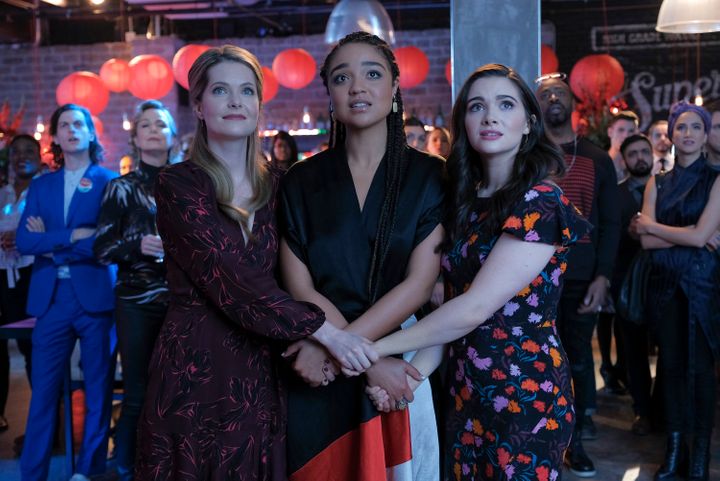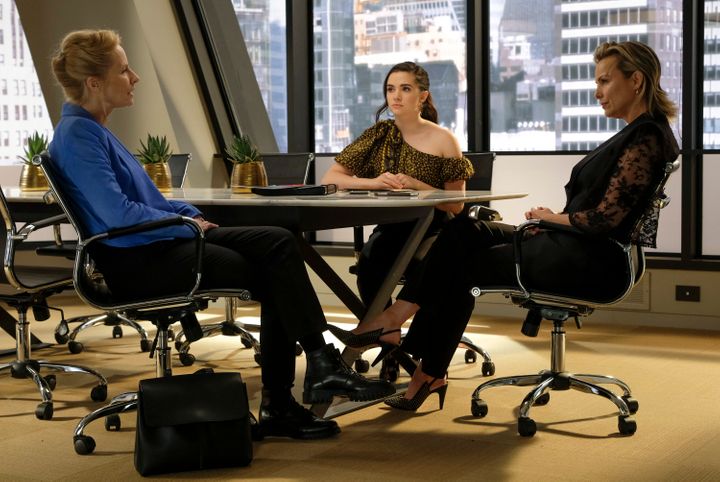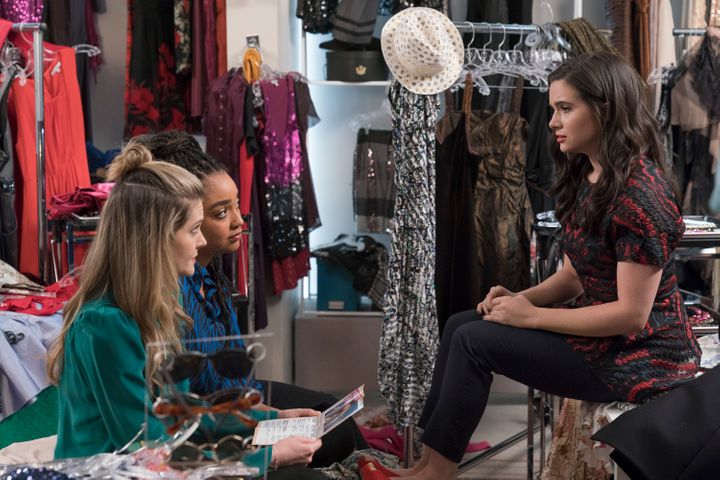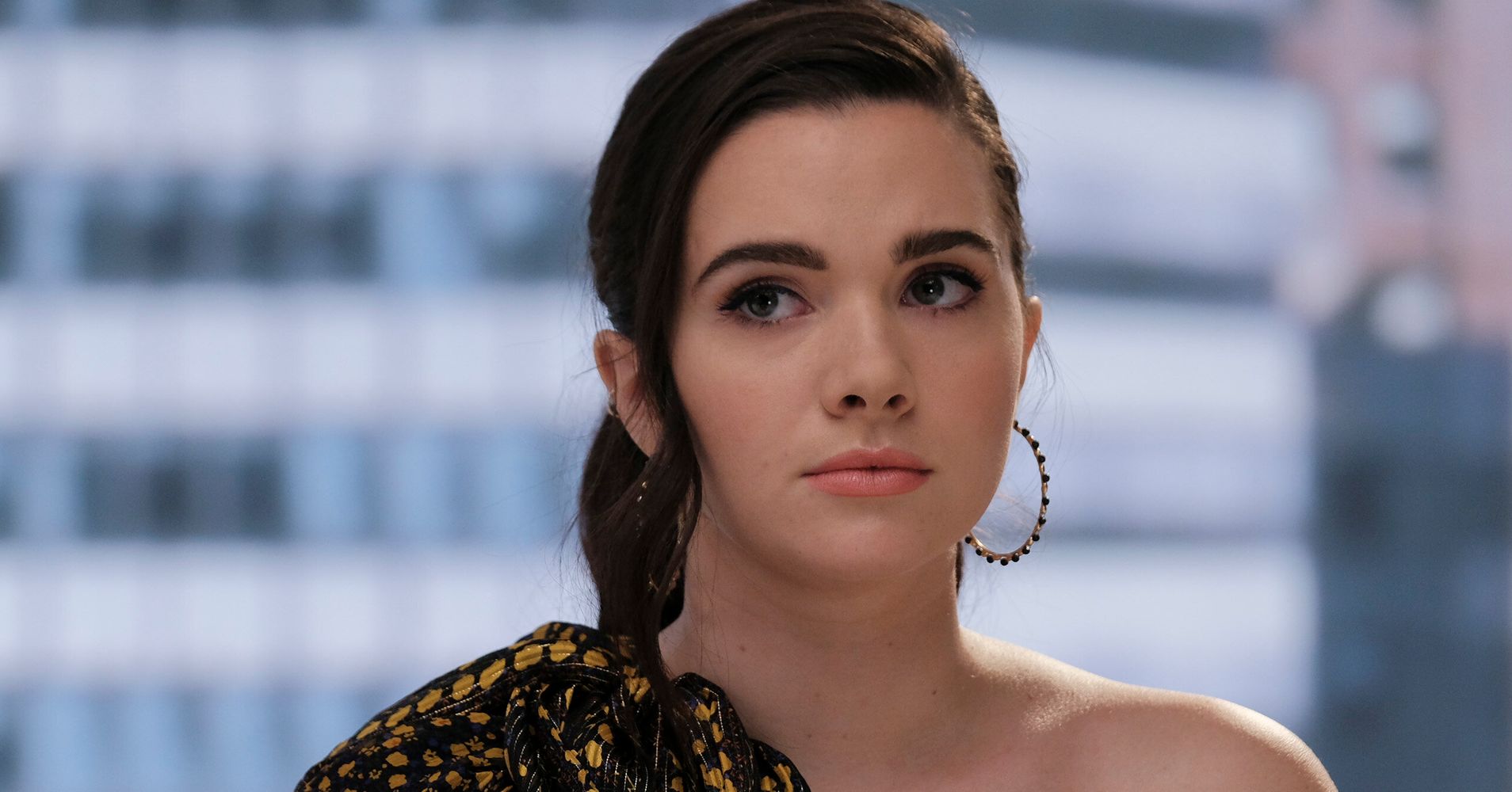[ad_1]
It’s Tuesday morning, sunny and warm in New York City. I sweep into the newsroom, my two photogenic besties at my side, and casually drop my designer handbag at my desk. My smoky eye is flawless and my sternum-baring satin minidress says “let’s do some journalism!” The new Lizzo track bounces in the background. Nothing can dim my shine.
My mentor and pal, the editor-in-chief of the publication, stops by my desk. “We need a piece for the Dot Com! Something fresh, attention-grabbing. What have you got?” she asks me. I glance down at my chipped manicure with a rueful, haunted smile. “How about ‘Why A Feminist Should Always Spring For Gels’?” She pauses, looking suddenly sympathetic. “Get it to me by five. And hey ― take care of yourself.”
I’ll get right on that ― after a quick pitstop to help my colleague stump for her political campaign on the company’s Instagram and, of course, hook up with my boyfriend in the fashion closet.
This is what my life would look like in the journalistic universe of “The Bold Type.” It’s upbeat, it’s glamorous, it’s warm and fuzzy — all qualities I’d hardly associate with the actual news industry today. It’s the show that jams in nonstop nods to real media trends (viral posts! reader engagement! feminist hashtag campaigns! Me Too!) while boldly daring to get almost every particular of the newsroom exactly wrong.
“The Bold Type” reflects the precarious, crumbling industry I work in through a bright, millennial pink filter, as if the glory days of magazines haven’t already ended. It should infuriate me. But, like many other women writers I know, I’m obsessed with it. And I suspect that its utter wrongness, its obliviousness to the realities of media today, are exactly why.
The show follows three women in their mid-twenties who work at a popular women’s magazine run by an iconic editor, Jacqueline (Melora Hardin), as it attempts to maintain its footing in the digital era. It’s flashy, aspirational yet pointedly relatable — a modern-day “Sex and the City,” right down to Jane’s impractical footwear and more likable friends. (She is obviously the Carrie.) Jane (Katie Stevens), a writer for Scarlet magazine, is the only journalist in the central trio, but her buddies also work for the publication. Kat (Aisha Dee), the publication’s youngest-ever social media director, appears to run the outlet’s entire social media strategy through off-the-cuff tweets sent from her phone. Sutton (Meghann Fahy), a fan favorite, fought her way up from hardscrabble roots to land a job as a fashion assistant. (Her live-in boyfriend is a 41-year-old company lawyer who serves on Scarlet’s board, and basically no one cares, despite the significant legal risk this would likely present for the company.)

Much like a fantasy series, “The Bold Type” specializes in a sort of violent collision between the very relatable and the utterly outlandish. The magazine struggles with declining print revenues, but one big, deeply reported story might be enough to save it. Kat feels motivated to get involved in local politics after her favorite lesbian bar is nearly forced to shut down, then uses Scarlet’s pages and social channels to promote political campaigns — including her own run for office. Jane pitches an exposé about an abusive female photographer, and the editor-in-chief of the magazine decides to co-report it with her.
Nearly every plot point feels ripped from the headlines, or at least from Twitter, and yet the show seems obstinately uninterested in how any of it would work. Kat, for instance, never seems to look at stats or to plan out social media campaigns in advance; she runs the whole ship, and yet barely deigns to drop by her desk. Jane, a junior writer, files all her copy directly to Jacqueline, an EIC so powerful she’s practically a celebrity, or, when she’s moved to the website, the head of digital. It appears no other editors even work at this major publication. Every pitch is drawn directly from Jane’s personal life, every piece is lauded as “brave” and “goes viral.” She eagerly offers to help Kat’s quest to unseat the city councilman who is shutting down the bar by pitching glowing coverage of his opponent, without a single qualm about the ethics or optics of using Scarlet to back a political campaign. Everyone keeps calling the website “The Dot Com.” I spend most of the show practically shrieking “that’s not how this works!” at the screen.
Now, journalists have been complaining that TV shows and movies get the profession wrong for a long time — and obviously, we’re not alone. Medical shows are notoriously inaccurate, and courtroom and crime procedurals bear but the slimmest relationship to reality. Critics, however, are more likely to pick up on inaccuracies in depictions of their own workplaces. Hit shows and movies including “The Newsroom,” “House of Cards,” “Trainwreck” and “Sharp Objects” have been dinged for misrepresenting the work of journalists, especially female ones.

It’s usually hard for me to get that worked up about this. Most of our jobs are fundamentally boring, and I don’t want to watch 40 minutes of a lawyer diligently filing paperwork for an appeal even if that’s the kind of work that makes up most of the actual job. Journalism is a dull process, even at glam women’s magazines; it involves a lot of time staring at a computer, punctuated by nervous phone conversations with sources who are almost never calling you up with an explosive leak.
But something about “The Bold Type” really gets my blood pumping, and I mean that both positively and negatively. It’s baffling to feel so openly courted, with its media insider chum — witness the “Cat Person”-inspired arc — and then to see it all blithely sprinkled onto an essentially optimistic take on media that could not be any further from the grim reality. It’s like watching a glossy show about Uber drivers living the dream. In 2019, really? Working as a journalist today means fighting for union recognition, anxiously awaiting annual rounds of layoffs, scouring job boards for full-time positions that rarely materialize, and strongly considering going to law school. It doesn’t mean that the golden age of magazines lives on, now with 50% more body positivity.
The real forces working against media workers today tend to be shadowy: owners, often faceless conglomerates; tech platforms devouring the advertising profits that once kept publications afloat. Sometimes, unjust as it may be, it’s easier to vent some rage against the comfortable sinecures who betray no awareness that the broader industry is in free fall.
Jane is an appealing scapegoat: entitled, unskilled, ignorant of her own profession, lacking in original ideas, and, of course, wildly successful. (That she’s fictional is an added benefit ― it alleviates the sense that blaming her for immense structural inequities is deeply unfair.) In one episode this season, Jane makes a hair appointment with a stylist, a potential source who doesn’t want to go on the record for a risky story, in hopes of getting her to spill the beans without realizing she’s talking to a reporter. It’s outrageously unethical, not to mention incompetent, but I watched with glee mixed into my horror. Her ineptitude is a work of art, and yet it is constantly rewarded. It’s like a bittersweet reminder that the meritocracy is a lie. The people sitting on top of the media heap haven’t exactly earned what they have (and neither, to be clear, have I). If anything, the industry often rewards mediocrity with particularly outsize success. It’s cold comfort, but at least the show fails to perpetuate the damaging myth that if you’re bright enough and work hard enough, you’ll be justly compensated.

My obsession may be rooted in resentment, but it also certainly arises from the guilt of even having a staff job in an industry fueled by economically precarious freelancers. Despite my wardrobe of comfy jeans, when it comes to the real world of the media, my life resembles Jane’s far more than most. My contempt for her teeters somewhere between uncomfortable self-loathing and righteous indignation. Sure, I’m tremendously lucky to have steady work and benefits in this dying industry, but at least I know that, right? When, in Season 2, she audaciously complains — to her friend Kat, who is black — that she lost a job she deserved because the publication decided to give it to a person of color, it becomes painfully clear that Jane believes her success is the pure result of her accomplishments.
As Season 3 wrapped up last week, our three heroines walked into a newsroom in turmoil. It’s unclear exactly what’s happening — it looks as though the entire office is being frantically disassembled, but does that mean layoffs, the entire publication closing, a move to digital only? It appears as though the women of Scarlet will face a ruder awakening in Season 4, which might actually mean the show is getting real. Maybe it will deal with freelancer precarity or a union drive. But it’s hard to imagine a show with the fundamentally sunny ethos of “The Bold Type” doing that well. Honestly, I hope they do it terribly. That’s what makes the show such perfect, rage-inducing, escapist fun.
REAL LIFE. REAL NEWS. REAL VOICES.
Help us tell more of the stories that matter from voices that too often remain unheard.
[ad_2]
Source link

